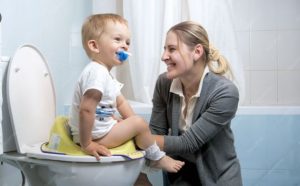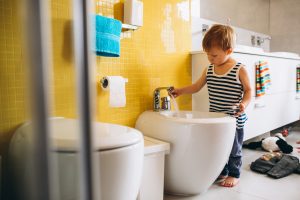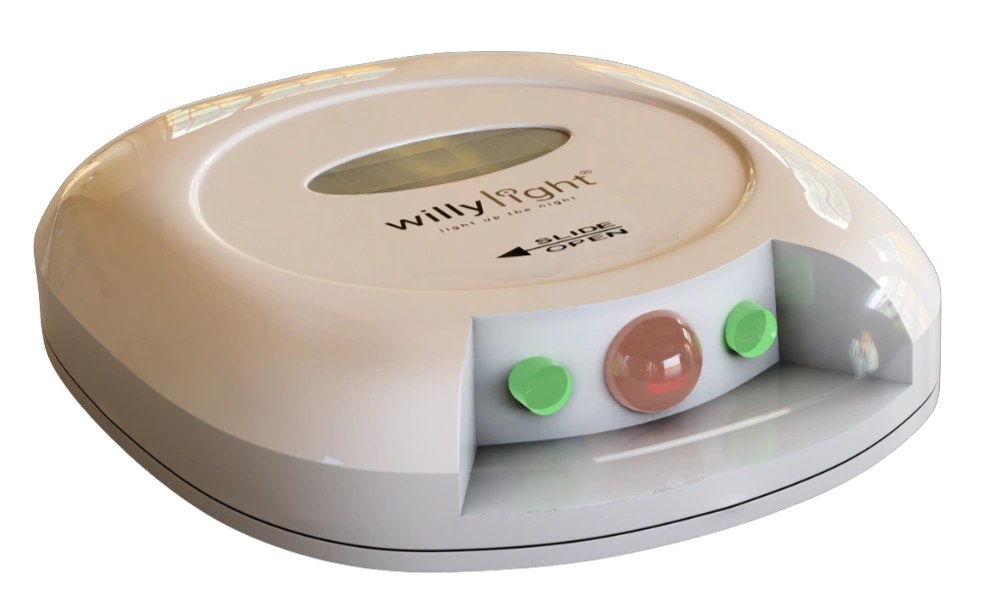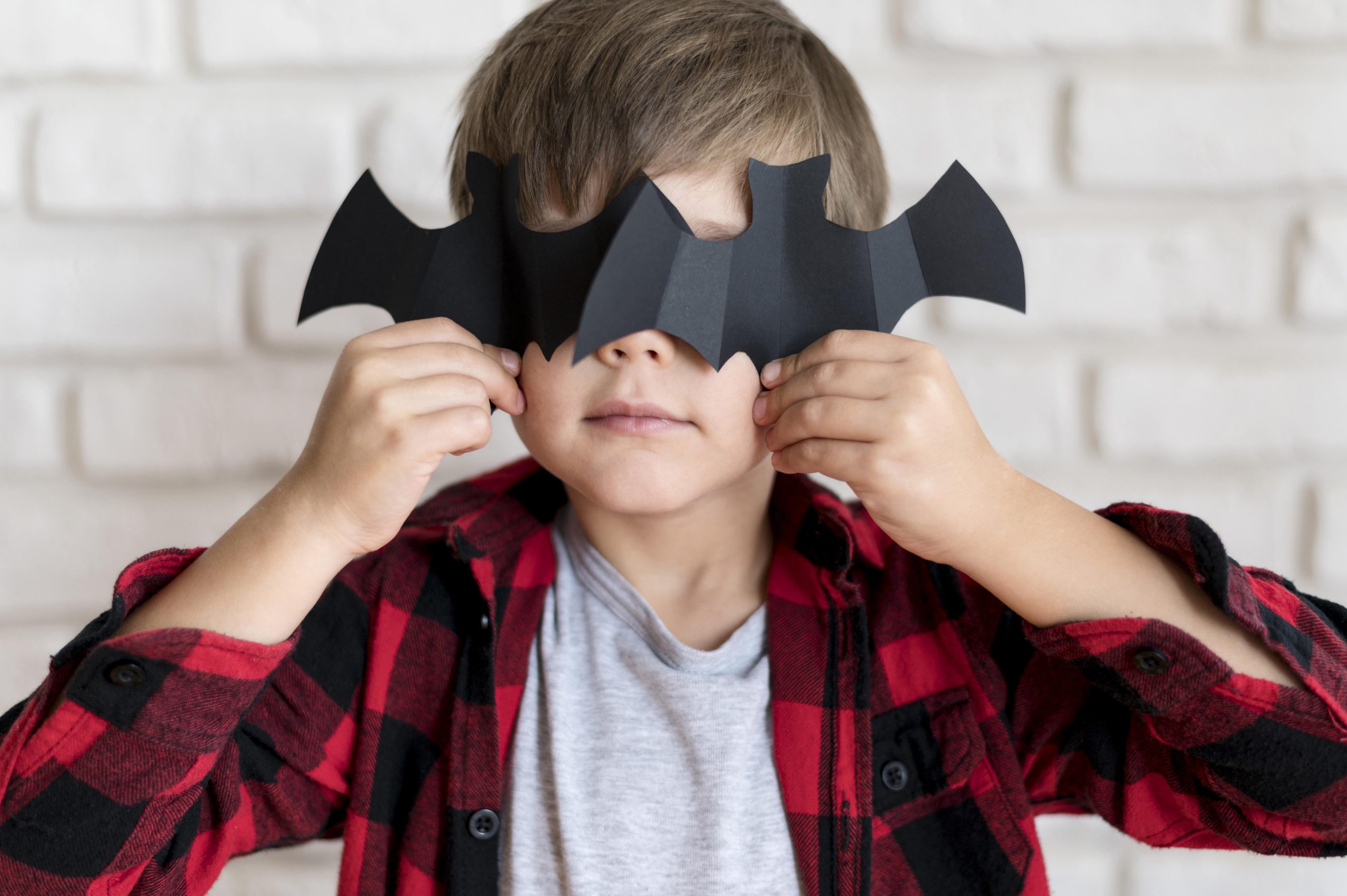Starting toilet training too early or too late creates unnecessary setbacks, frustration, and extended training periods. The key to success lies in recognizing your child’s individual readiness signals rather than following arbitrary timelines or external pressure.

True readiness involves physical, emotional, and cognitive development markers working together. One of the most reliable early indicators is visual interest – when children begin showing curiosity about bathroom activities and visual cues around toileting. Tools like the Willy Light often capture this visual interest, making them excellent readiness assessment tools while preparing children for successful training.
This guide reveals the 10 definitive signs that indicate your child is genuinely ready to begin toilet training, helping you start at the optimal moment for lasting success.
Three-year-old Marcus had been “toilet training” for eight months with minimal progress. His parents, feeling pressure from daycare and comparing him to peers, had started the process when Marcus was barely 2.5 years old. Despite sticker charts, scheduled bathroom breaks, and endless encouragement, accidents were still daily occurrences and resistance was high.
Then Marcus’s grandmother visited and made a simple observation: “He’s not actually ready yet. Look at how he ignores the potty completely and shows no interest in bathroom activities. You’re working harder at this than he is.”
Within two weeks of pausing training and waiting for genuine readiness signs, everything changed. Marcus began asking about the bathroom, showing interest in visual cues, and demonstrating the physical control that had been missing months earlier. His actual toilet training took just three weeks.
This story illustrates a crucial truth: timing mistakes cause more setbacks than any other factor in toilet training. Starting at the right moment – when your child shows genuine readiness – leads to faster, more successful outcomes with less stress for everyone.
Why Timing Is Everything in Toilet Training
The Cost of Starting Too Early
When parents begin toilet training before genuine readiness, several problems develop:
Extended training periods: What could take 3-6 weeks stretches into months or even years Increased resistance: Children who aren’t ready often develop negative associations with toileting Family stress: Daily accidents and power struggles affect household harmony Confidence damage: Repeated “failures” can impact a child’s self-esteem and willingness to try Regression risk: Children may lose skills they seemed to have mastered
The Risk of Waiting Too Long
Conversely, missing the optimal readiness window can create different challenges:
Established patterns: Children become comfortable with current routines and resistant to change Peer pressure issues: Social situations where toilet independence becomes important Physical challenges: Larger children may find potty chairs uncomfortable or too small Habit entrenchment: Longer dependence on diapers can make transition more difficult

The Sweet Spot: True Readiness
When you start toilet training at the moment of genuine readiness, you’ll notice:
- Faster skill acquisition (weeks instead of months)
- Less resistance and more cooperation
- Fewer accidents and regression episodes
- Natural curiosity and engagement with the process
- Pride and excitement about growing up
The 10 Definitive Signs of Toilet Training Readiness
Sign #1: Visual Interest in Bathroom Activities
What to look for: Your child shows curiosity about bathroom activities, watches others use the toilet, or demonstrates fascination with bathroom-related visual cues.
Why it matters: Visual interest indicates cognitive readiness and natural curiosity about the process. Children who notice and respond to visual cues around toileting are demonstrating the observational skills necessary for successful training.
Real-world examples:
- Following you into the bathroom and asking questions
- Pointing out or commenting on toilet-related items
- Showing interest in visual feedback systems like the Willy Light
- Watching siblings or parents use the bathroom with curiosity rather than indifference
This visual engagement often appears weeks before other readiness signs and can be an excellent early indicator that training time is approaching.
Sign #2: Extended Dry Periods
What to look for: Your child stays dry for 2+ hours during the day, indicating developing bladder control.
Why it matters: Physical bladder control is fundamental to successful toilet training. Without this physiological readiness, all the motivation and instruction in the world won’t create lasting success.
How to assess:
- Check diapers every 2 hours for a week
- Note patterns of when wetness occurs
- Look for predictable timing of urination
- Observe if your child can “hold it” when distracted by play
Children showing this sign are often ready to begin within 2-4 weeks.
Sign #3: Predictable Bowel Movement Timing
What to look for: Regular, predictable patterns for bowel movements, often at similar times each day.
Why it matters: Predictability allows you to anticipate bathroom needs and creates opportunities for success. It also indicates physical maturity and routine establishment.
Patterns that indicate readiness:
- Same time daily (often after meals)
- Physical signs before bowel movements (hiding, squatting, facial expressions)
- Verbal or non-verbal communication about the process
- Awareness and discomfort with soiled diapers
Sign #4: Communication About Bathroom Needs
What to look for: Your child can communicate bathroom needs through words, gestures, or consistent signals – even if they can’t always make it to the toilet in time.
Why it matters: Communication ability indicates cognitive awareness of bodily functions and the desire to share this information with caregivers.
Communication signs:
- Saying “potty,” “pee,” or “poop”
- Using gestures to indicate bathroom needs
- Telling you after they’ve soiled their diaper
- Asking to use the bathroom (even if they don’t actually go)
The key is awareness and communication, not perfect timing initially.
Sign #5: Physical Independence in Other Areas
What to look for: Your child demonstrates physical coordination through walking steadily, climbing stairs, and manipulating objects with increasing dexterity.
Why it matters: Toilet training requires significant physical coordination – sitting, standing, undressing, wiping, and redressing. Children need basic motor skills established first.
Physical readiness indicators:
- Steady walking without frequent falls
- Ability to sit down and stand up from low chairs independently
- Coordination to undress themselves (at least partially)
- Fine motor skills for wiping attempts
Sign #6: Following Simple Multi-Step Instructions
What to look for: Your child can follow 2-3 step directions consistently in other areas of daily life.
Why it matters: Toilet training involves complex sequences: recognizing the urge, communicating the need, getting to the bathroom, undressing, using the toilet, wiping, dressing, and handwashing. Children need instruction-following skills first.
Examples of readiness:
- “Please get your shoes and put them by the door”
- “Pick up your toys and put them in the basket”
- “Go wash your hands and then come eat”
If your child struggles with basic multi-step instructions, toilet training may be premature.
Sign #7: Showing Independence and Pride
What to look for: Your child demonstrates desire for independence and takes pride in accomplishments in other areas.
Why it matters: Toilet training requires internal motivation and pride in growing up. Children who aren’t yet seeking independence may not have the psychological readiness for toilet training success.
Independence indicators:
- Wanting to do things “by myself”
- Pride in new accomplishments
- Resistance to help with tasks they can manage
- Interest in “big kid” activities and privileges
Sign #8: Awareness of Wet/Dirty Diapers
What to look for: Your child notices and communicates discomfort when their diaper is wet or soiled, often asking to be changed.
Why it matters: Sensory awareness of wetness and discomfort provides natural motivation for using the toilet. Children who remain comfortable in soiled diapers often lack this crucial internal motivation.
Awareness signs:
- Saying “dirty” or “wet” when soiled
- Bringing you a clean diaper
- Attempting to remove soiled diapers themselves
- Showing clear discomfort or distress when soiled
Sign #9: Interest in Underwear and “Big Kid” Items
What to look for: Your child shows fascination with underwear, expresses desire to wear “big kid” pants, or asks about toilet-related items.
Why it matters: This interest indicates psychological readiness and positive associations with toilet independence. It provides natural motivation and excitement about the process.
Interest indicators:
- Asking about siblings’ or parents’ underwear
- Wanting to wear underwear over their diaper
- Excitement about “big boy” or “big girl” items
- Interest in special toilet training tools or visual aids like the Willy Light
Sign #10: Stable Routine and Emotional Readiness
What to look for: Your child is in a stable period without major life changes, sleeping well, eating predictably, and emotionally regulated most of the time.
Why it matters: Toilet training requires significant emotional and cognitive energy. Children dealing with major stress, changes, or developmental leaps may not have the emotional resources for successful training.
Stability indicators:
- Consistent sleep patterns
- Predictable eating habits
- Generally positive mood and cooperation
- No major life changes (new baby, moving, starting daycare)
How Many Signs Do You Need?
For successful toilet training, look for:
- At least 7 out of 10 signs consistently present
- Signs #1, #2, and #4 (visual interest, dry periods, communication) are especially crucial
- Signs appearing together rather than isolated incidents
- Consistency over 2-3 weeks rather than occasional occurrences
Remember: every child develops differently. Some may show all signs clearly, while others may be ready with fewer obvious indicators. Trust your parental instincts combined with these objective measures.

Age-Related Readiness Patterns
18-24 Months: Early Readiness (Uncommon)
Some children show signs this early, particularly:
- Advanced verbal development
- Strong routine preferences
- High awareness of body sensations
- Interest in imitating others
Approach: Gentle introduction to potty concepts without pressure
2-2.5 Years: Typical Readiness Window
Most children begin showing multiple signs during this period:
- Physical development catches up to interest
- Communication skills support the process
- Independence desires emerge strongly
Approach: Active assessment and preparation for training
2.5-3 Years: Common Starting Point
Peak readiness period for many children:
- All developmental areas typically aligned
- Physical control well-established
- Strong motivation for independence
Approach: Full toilet training implementation when signs align
3+ Years: Later Readiness
Some children aren’t ready until after age 3:
- Often late starters who then progress quickly
- May have been rushed earlier and need time to reset
- Individual developmental patterns
Approach: Patience and support without shame or pressure
Special Considerations for Boys vs. Girls
Boys’ Readiness Patterns
Boys often show readiness differently:
- May demonstrate physical signs before emotional readiness
- Often need visual interest in toilet seat etiquette and bathroom behavior before other signs
- Frequently show strong interest in aim-related challenges
- May need longer for all signs to align
Girls’ Readiness Patterns
Girls typically display:
- Earlier communication about bathroom needs
- Strong social motivation and interest in pleasing others
- Often show multiple signs simultaneously
- May be ready before obvious physical control is complete
Understanding these gender differences helps set appropriate expectations for readiness timing.
What to Do When Signs Appear
7-10 Signs Present: Begin Active Training
Your child is likely ready for full toilet training implementation:
- Introduce intensive toilet training approach
- Establish consistent routines and expectations
- Use visual aids and feedback systems
- Celebrate successes enthusiastically
4-6 Signs Present: Preparation Phase
Your child is approaching readiness:
- Begin casual potty introduction
- Read toilet training books together
- Introduce visual cues and bathroom routines
- Watch for additional signs to emerge
1-3 Signs Present: Early Awareness
Your child is beginning to develop awareness:
- Continue observation without pressure
- Introduce bathroom vocabulary naturally
- Allow bathroom visits for observation
- Avoid active training attempts
Common Readiness Mistakes
Mistake #1: Calendar-Based Starting
The problem: Starting based on age, daycare requirements, or arbitrary timelines rather than individual readiness signs.
The solution: Wait for your child’s individual developmental indicators regardless of external pressures.
Mistake #2: Ignoring Missing Signs
The problem: Proceeding with training when several crucial signs (especially physical control) are absent.
The solution: Ensure foundational signs are solidly present before beginning intensive training.
Mistake #3: Expecting Perfection
The problem: Assuming readiness means immediate success without accidents or setbacks.
The solution: Understand that readiness indicates capability, not perfection. Expect a learning curve even with ready children.
Mistake #4: Missing the Window
The problem: Recognizing readiness signs but delaying training due to convenience or fear.
The solution: When genuine readiness appears, begin training within 2-4 weeks to capitalize on natural motivation.
Creating Readiness When It’s Borderline
If your child shows some but not all readiness signs, you can encourage development:
Building Visual Interest
- Read toilet training books together
- Allow bathroom visits for observation
- Introduce fun visual aids like the Willy Light that capture attention
- Point out bathroom-related items during daily activities
Encouraging Communication
- Use consistent bathroom vocabulary
- Ask about diaper status regularly
- Celebrate any bathroom-related communication
- Model appropriate bathroom language
Supporting Physical Development
- Practice sitting and standing from low chairs
- Encourage undressing practice during bath time
- Provide opportunities for following multi-step instructions
- Support gross and fine motor skill development
Building Independence Motivation
- Offer choices in other areas of daily life
- Celebrate independent accomplishments
- Introduce “big kid” concepts gradually
- Connect toilet training to desired privileges
The Role of Visual Cues in Readiness Assessment
Visual interest and responsiveness to visual cues serve as excellent readiness predictors. Children who notice and respond to visual bathroom cues often show:
- Advanced observational skills
- Interest in cause-and-effect relationships
- Readiness for immediate feedback systems
- Natural curiosity about bathroom processes

Tools like the Willy Light can serve dual purposes: assessing visual readiness and providing the immediate feedback that supports successful training once it begins.
When Professional Input Helps
Consider consulting your pediatrician if:
- Your child shows no readiness signs by age 3.5
- Signs appear but quickly disappear repeatedly
- Physical control seems absent despite other readiness indicators
- Previous traumatic bathroom experiences affect readiness
- Developmental delays impact typical readiness patterns
Remember: there’s no shame in waiting. Starting at the right time prevents more problems than rushing ever solves.
Success Story: Waiting for the Right Moment
The Thompson family learned the value of proper timing the hard way. They started toilet training their daughter Emma at 2 years old because she showed early verbal skills and interest. However, she lacked physical control and independence desires.
After months of limited progress, they paused training. Three months later, Emma suddenly showed strong visual interest in bathroom activities, began staying dry for longer periods, and started asking to use the toilet. Her actual toilet training took just four weeks.
“I wish I had known about the 10 signs earlier,” reflects mother Sarah Thompson. “We would have saved everyone months of frustration by simply waiting for true readiness. The difference was night and day when she was actually ready.”
Trust the Process and the Signs
Successful toilet training begins with recognizing genuine readiness rather than following arbitrary timelines or external pressure. When you observe your child carefully and wait for the alignment of physical, emotional, and cognitive readiness signs, toilet training becomes a natural developmental milestone rather than a prolonged struggle.
The 10 signs outlined in this guide provide objective measures for assessing readiness, with visual interest often serving as an early and reliable indicator. Tools that capture this visual attention, like the Willy Light, can help both assess readiness and support the training process once it begins.
Remember: every child develops at their own pace. Your child will show readiness when their individual development aligns with toilet training requirements. Trust these signs, trust your instincts, and trust that starting at the right moment leads to faster, more successful outcomes with less stress for everyone involved.
The patience you show in waiting for genuine readiness will be rewarded with a smoother, more positive toilet training experience that builds your child’s confidence and sets the foundation for lasting success.
For more guidance on toilet training success, explore our related articles on teaching toilet seat etiquette, using visual cues effectively, gender-specific strategies, and age-appropriate approaches.




